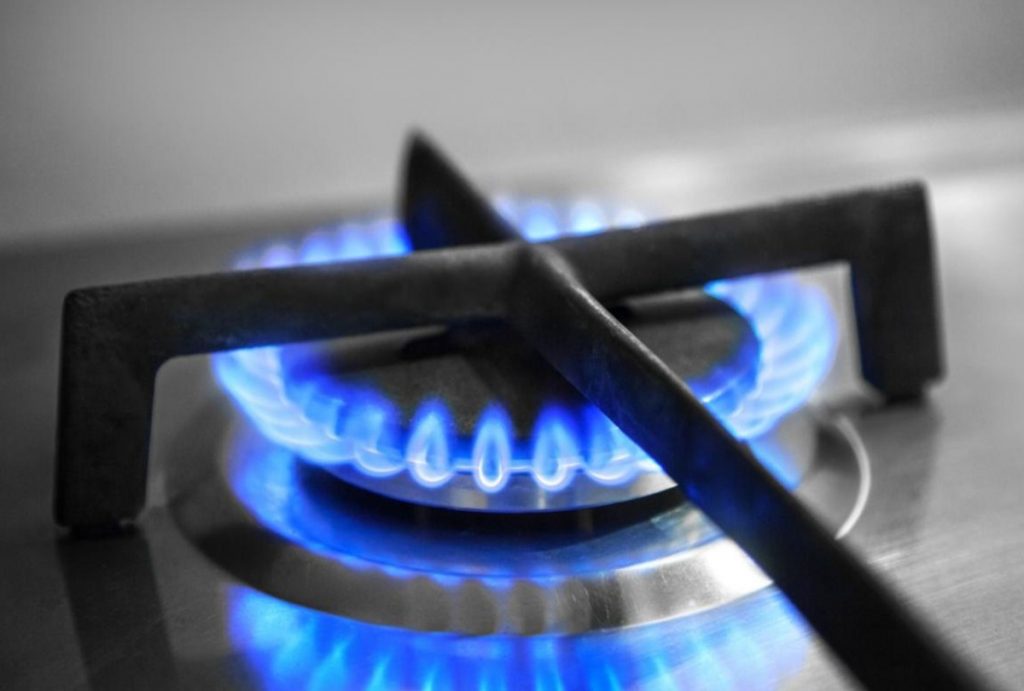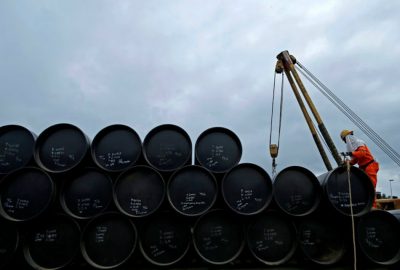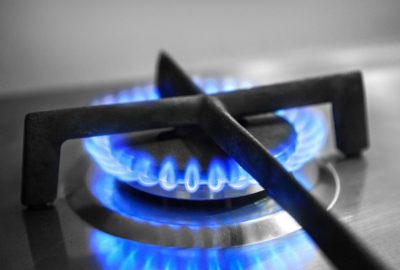
(Reuters) – U.S. natural gas futures fell about 5% on Tuesday as less gas flows to the nation’s liquefied natural gas (LNG) export plants and after President Donald Trump suspended his threat of steep tariffs on Mexico and Canada.
That tariff suspension reduced futures prices because roughly 9% of the gas consumed in the United States comes from Canada, and higher tariffs would have boosted the cost of that fuel.
Front-month gas futures for March delivery on the New York Mercantile Exchange fell 17.5 cents, or 5.2%, to $3.177 per million British thermal units (mmBtu) at 8:05 a.m. EST (1305 GMT).
In the spot market, uncertainty about the tariffs on Monday boosted gas prices at the AECO hub in Alberta by over 70% to $3.68 per mmBtu, their highest since January 2024. That Canadian gas spike sent next-day power prices at the Mid Columbia hub in Oregon soaring by more than 124% to a near five-month high of around $235 per megawatt hour.
The Pacific Northwest is heavily dependent on gas supplies from Canada. About two-thirds of the gas used in Oregon comes from Canada, according to state data and local media reports. In 2024, gas-fired plants generated about 38% of the power in Oregon. Most of the rest – about 41% – came from hydropower dams, according to the U.S. Energy Information Administration (EIA).
The United States consumed a record 90.3 billion cubic feet per day (bcfd) of gas in 2024. About 8.4 bcfd, or roughly 9%, of that fuel came from Canada, according to the EIA. That compares with U.S. imports from Canada of around 8.0 bcfd in 2023 and an average of 7.5 bcfd during the prior five years (2018-2022).
SUPPLY AND DEMAND
Financial firm LSEG said average gas output in the Lower 48 U.S. states rose to 106.0 bcfd so far in February, up from 102.7 bcfd in January when freezing oil and gas wells and pipes, known as freeze-offs, cut production, according to LSEG data. That compares with a monthly record of 104.6 bcfd in December 2023.
On a daily basis, however, output was on track to fall by around 1.5 bcfd over the past four days to a preliminary 105.1 bcfd on Tuesday, down from a daily record high of 106.6 bcfd on Jan. 31. The prior all-time high was 106.4 bcfd in January 2024.
After extreme cold last week boosted heating demand to a record high, analysts said energy firms may have pulled a record amount of gas out of storage this month. The current record monthly storage withdrawal is 994 billion cubic feet in January 2022, according to federal energy data.
Meteorologists projected weather in the Lower 48 states would switch from warmer than normal through Feb. 8 to mostly colder than normal from Feb. 9-19.
With colder weather coming, LSEG forecasts average gas demand in the Lower 48 states, including exports, will rise from 123.8 bcfd this week to 132.7 bcfd next week. Those forecasts were lower than LSEG’s outlook on Monday.
The amount of gas flowing to the eight big U.S. LNG export plants rose to an average of 15.0 bcfd so far in February, up from 14.6 bcfd in January. That compares with a monthly record high of 14.7 bcfd in December 2023.
On a daily basis, however, LNG feedgas was on track to fall to 14.5 bcfd on Tuesday due mostly to a reduction in flows to Cheniere Energy’s 4.5-bcfd Sabine Pass export plant in Louisiana.
Flows to Sabine were on track to drop to a 13-week low of 4.1 bcfd on Tuesday, down from 4.6 bcfd on Monday and an average of 4.9 bcfd over the prior seven days.
Reporting by Scott DiSavino; Editing by Kirsten Donovan and Emelia Sithole-Matarise
Share This:
More News Articles











